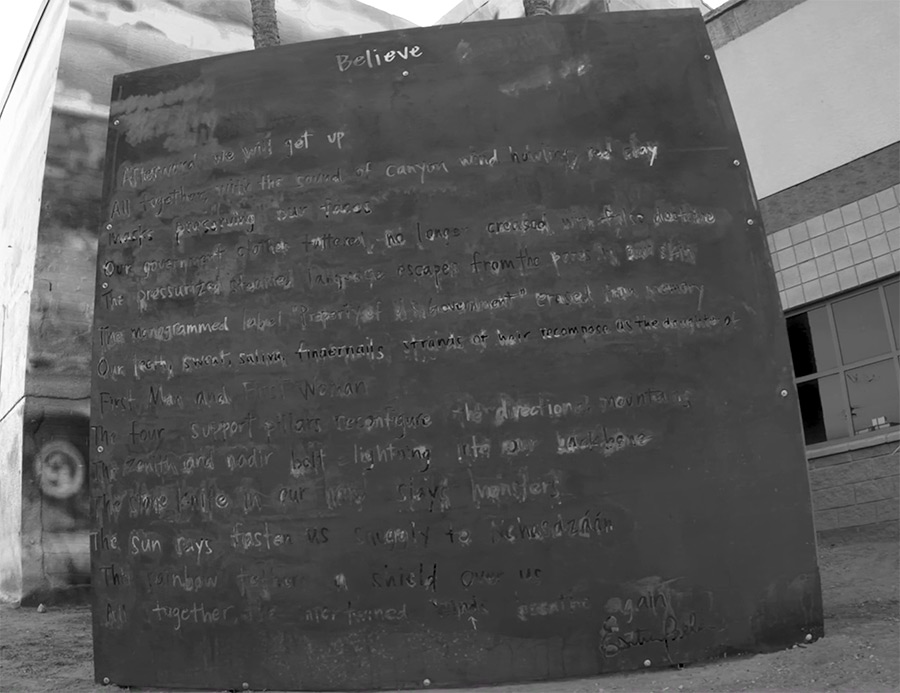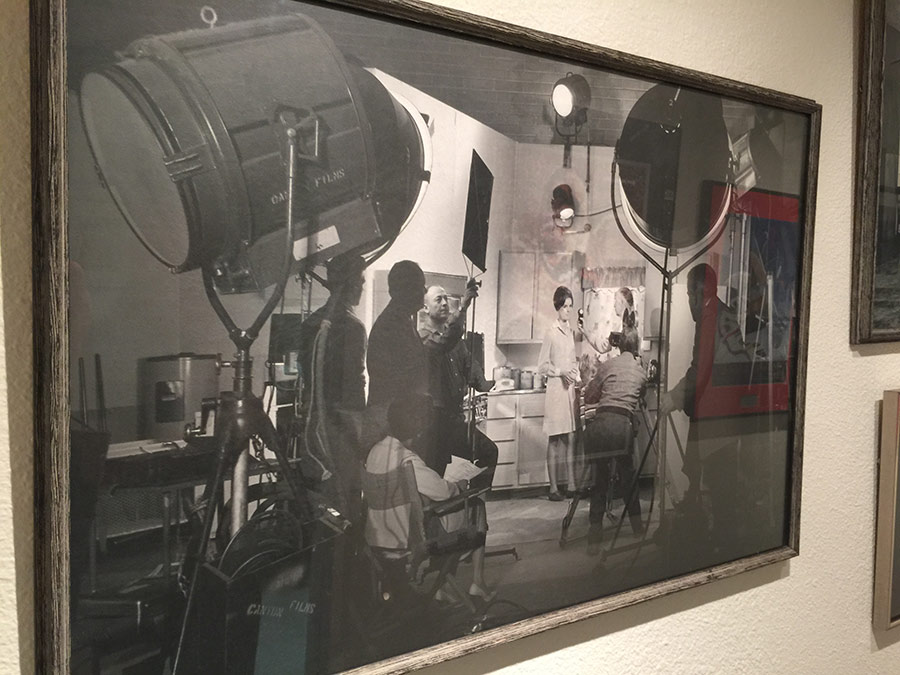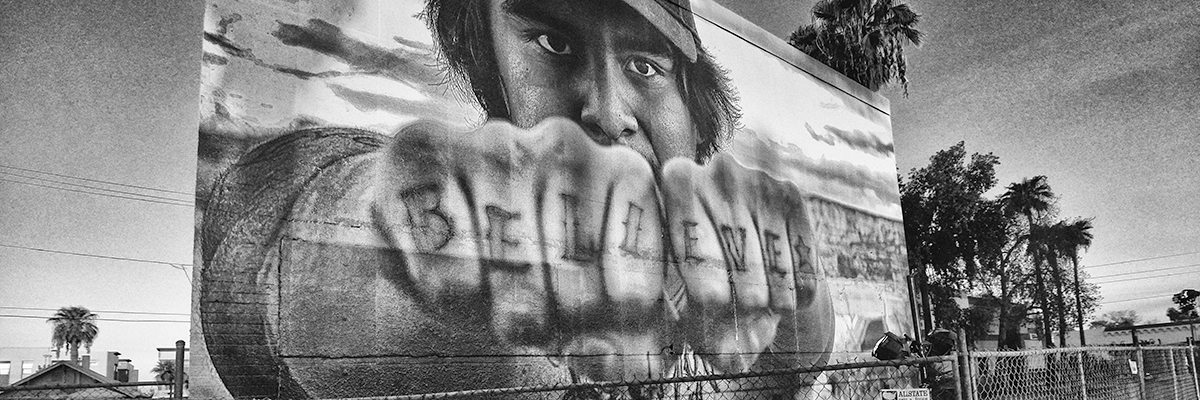Pure poetry.
Sometimes art in the streets can be like that – a reflection of your intellectual musings and your heart’s leanings. Because he has often taken a path less traveled, photographer / doctor / activist / organizer / producer / teacher Chip Thomas (aka Jetsonorama) seamlessly slips into and out of all of his roles. In this way, he may also appear as poet.

As every one of us has had to travel to the well again and again to find reason and inspiration to deal with the impact of the pandemic and economic depression, each of us is transformed; our muted characteristics heightened, our definitions re-examined, our priorities re-configured. Time and again it is gratifying to see how the community of artists can translate these phenomenon into art in the public sphere.

Chip Thomas tells us, “In October I was invited by Kirk Strawn of Phoenix, AZ to install a collaboration piece with poet Esther Belin titled “Believe” which is found in chapter 4. The poem anticipates our post pandemic future.”
To create the book called Pandemic Chronicles, Volume 1, Chip Thomas danced with his many disciplines – sometimes producing art in the public sphere with a partner, other times collaborating on the print project, or working with patients and the medical community. Over time the number of expressions captured collect into a holistic appraisal of the moment we are in.

“I spent April to August 2020 collaborating with poets Esther Belin (Navajo), Ursual Rucker, Olmeca, Jess X Snow, Mahogany L. Browne and visual artists Titus Brooks Heagins and André Leon Gray,” he says of the resulting project. Today we feature some of the words and images that came from those collaborations. We also allow Mr. Thomas to narrate the work as he finds most appropriate.
To get your own copy of Pandemic Chronicles, Volume 1 you can go to Just Seeds https://justseeds.org/product/pandemic-chronicles-volume-1/, publisher for the hard copy. As a free online book you can also go to The Art Journal http://artjournal.collegeart.org/?p=14294)The book focuses on the early part of the pandemic and is divided into 4 chapters:
1. Response,
2. Life Goes On,
3. Loss, and
4. Hope, Redemption and Empowerment.


“The building used for the installation of ‘Believe’ was originally constructed in 1951 and was the home of Canyon Records. Besides being one of the oldest independent record labels in the music industry the label focuses on Native American music. The building at one time also housed a tv studio which produced a popular cooking show.”




“In December 2020 I was invited also by the Heard Museum to install another collaboration with Esther. This poem is titled ‘Sonnet of Lament’ which comes from chapter 3, ‘Loss’.”




Other Articles You May Like from BSA:
It’s BSA Film Friday! Now we present the best of the year, according to you. We bring you new videos each week – about 240 of them this year. The beauty of the experience is that it can feel quit...
Let’s be fools in love, shall we? Let’s be exuberant in our love for this city, this life, this opportunity. Life only happens once. Let’s fall in love with it. Happy Valentine’s Day to the wh...
Springtime in New York! Crocuses, tulips, fire extinguisher tags! Ahh the joy of life! Happy Purim to the Jewish neighbors. Saal-e-no mobaarak (سال نو مبارک) Happy New Year to the Iranian neighbo...
Happy Holidays to all of you charming and sparkling BSA readers! It’s been a raucous sleigh ride with you and we thank everyone most sincerely for your support and participation this year. A sort o...
BSA again proudly shouts out Young New Yorkers this week as they offer you works by many Street Artists on the scene today at auction. Check out the auction on April 1st of some of New Yorks’ fine...
 BROOKLYN STREET ART LOVES YOU MORE EVERY DAY
BROOKLYN STREET ART LOVES YOU MORE EVERY DAY










